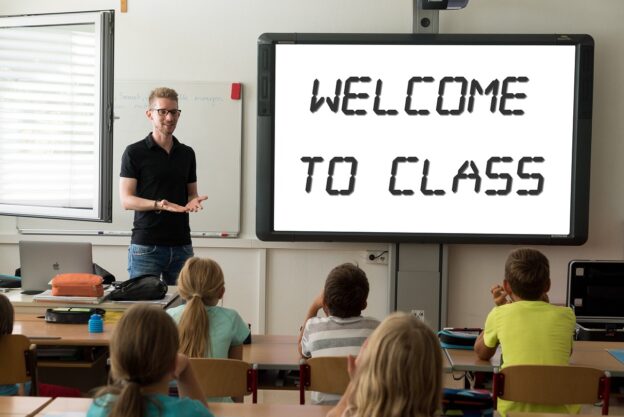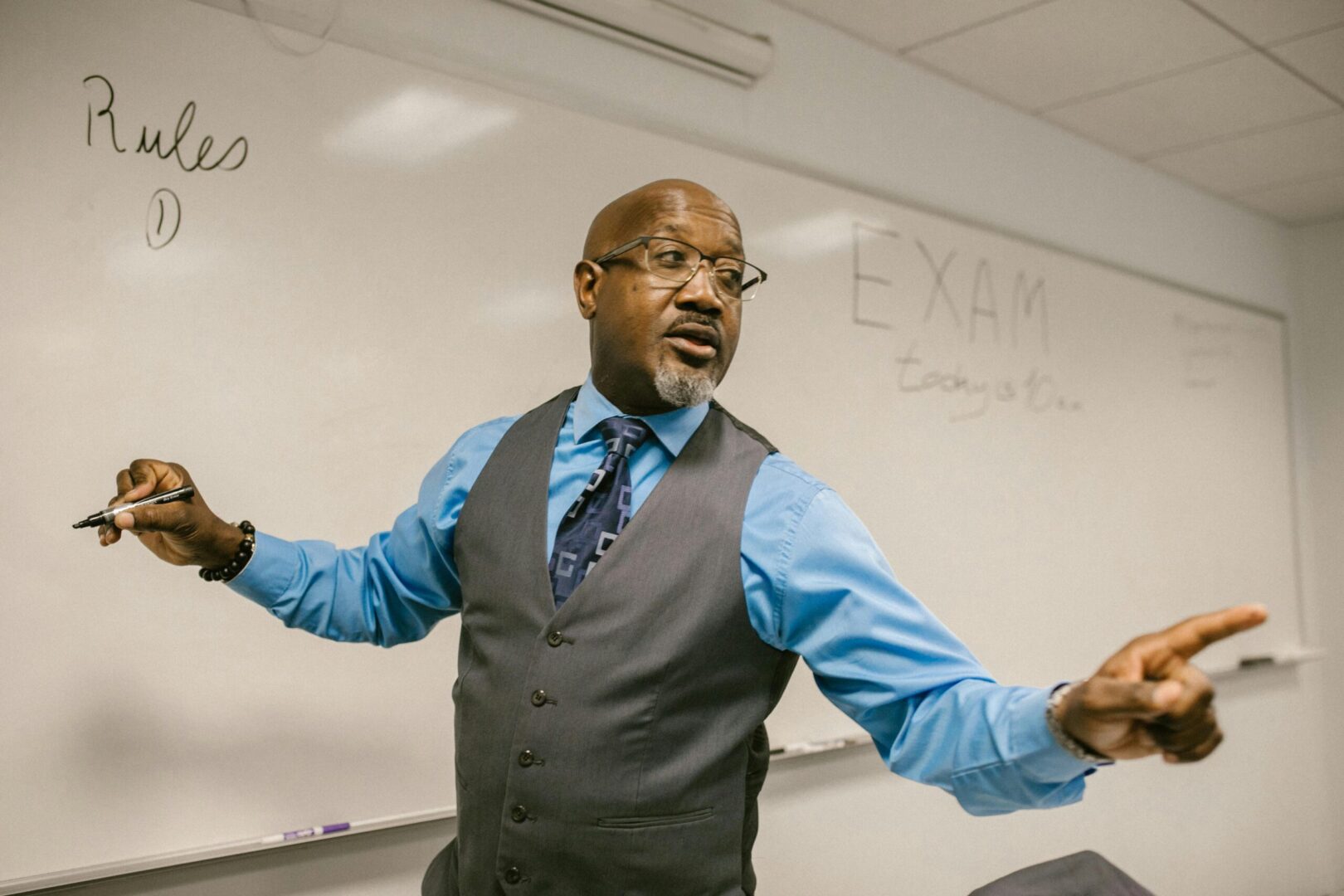As a school and district leader, I’ve experienced teacher absenteeism’s strain on the system. While researching that recently, I thought I would share some details here. Ultimately, I decided to try to address this through a certification pathway on K12Leaders to help improve the management and impact of substitute teachers (you’ll see links below). Still, I thought it was also important to share some of the research.
Teacher absenteeism remains a significant challenge for schools nationwide. On average, teachers miss about 11 days during an 186-day school year, accounting for approximately 6% of instructional time (Frontline Education, 2018). This was before the pandemic. Since the pandemic, schools reported in a National Center of Education Statistics survey that 72% of schools had a higher teacher absenteeism rate (Green & Butcher, 2023). While occasional absences are inevitable, high levels of absenteeism disrupt classroom learning and school culture, especially when qualified substitutes are unavailable. Addressing this issue requires reducing unnecessary absences and building a pool of well-prepared substitute teachers to maintain educational continuity.
Patterns vary across different contexts. According to the U.S. Department of Education, a teacher absent 10 or more days in a school year is chronically absent. Based on Frontline Research & Learning Institute data, 39% of teachers fit this definition (Frontline Education, 2018). Absences often cluster around Mondays and Fridays, indicating that some are discretionary (Green & Butcher, 2023). Moreover, schools in low-income and minority communities experience higher absenteeism rates, reflecting additional stresses, limited resources, and challenging work environments (Clotfelter et al., 2009). Effective solutions must address these root causes to support teachers and reduce absenteeism.
Several strategies have proven effective in reducing absenteeism. Investing in meaningful professional development can decrease burnout, a primary driver of absenteeism. For instance, implementing a flexible professional development program outside regular school hours has increased teacher satisfaction and reduced absences. Similarly, utilizing data-driven approaches by tracking teacher attendance trends allows for timely interventions that support teachers where needed most, resulting in decreased chronic absenteeism.
A positive school climate also correlates with lower absenteeism rates. Schools prioritizing supportive environments through initiatives like peer mentoring and wellness programs foster healthier workplaces and happier staff. Schools with strong leadership and positive climates experience fewer teacher absences. These efforts contribute to a sense of community and support, significantly enhancing teachers’ daily experiences.
Despite efforts to improve attendance, some absences are unavoidable, highlighting the importance of qualified substitute teachers. Research indicates that chronic teacher absenteeism can decrease student math achievement by 3.3% for every 10 additional days missed (Miller et al., 2008). The presence of well-trained substitutes can help mitigate these effects and ensure continuous student learning.
Some districts are already addressing this challenge by investing in professional development for substitutes, covering classroom management, lesson adherence, and student engagement. These initiatives create a reliable pool of substitutes who maintain instructional standards during teacher absences. Similarly, certification programs like “The Fundamentals of Substitute Teaching K-12” equip substitutes with practical tools and strategies for classroom success, ensuring they contribute positively to the educational experience.
Leadership also plays a crucial role in addressing absenteeism and supporting substitute quality. Some districts have revisited leave policies to balance accountability with support. By adjusting sick leave allowances and implementing documentation requirements, districts have reduced discretionary absences without penalizing legitimate leave. Other districts use incentive programs to reward good attendance, resulting in decreased absenteeism.
Flexible scheduling also supports teachers’ well-being. Districts offering staggered start times or flexible professional development days can support teacher health while maintaining instructional time. Such policies acknowledge teachers’ unique challenges, creating a supportive environment that encourages regular attendance.
Leadership can also implement policies to ensure proper funding is allocated to train effective substitutes to maintain quality instruction during teacher absences. Investing in substitute training programs ensures substitutes have the tools to manage classrooms, engage students, and follow lesson plans. Districts implementing these approaches yielded positive results, with substitutes contributing to improved student engagement and reduced classroom disruptions. Schools investing in substitute training reinforce educational stability, even when regular teachers are absent.
For district leaders addressing teacher absenteeism and supporting quality substitute teaching, here are some essential questions for leadership to consider:
- Can we find specific patterns among our absent teachers? Can we identify any root causes?
- How do we suspect teacher absenteeism impacts student achievement? What feedback have we had from our staff?
- What PD are we offering to support teacher well-being?
- What data do we have to help detect and address absentee trends early?
- How can leadership improve our school climate to foster a supportive work environment?
- What training and certifications could enhance substitute effectiveness?
- Are there changes to policies that might support teacher attendance?
Addressing teacher absenteeism requires reducing avoidable absences and ensuring quality instruction during inevitable absences. Districts prioritizing professional development, adjusting policies to support teacher attendance, and investing in qualified substitutes uphold educational standards. Certification programs like “The Fundamentals of Substitute Teaching K-12” help schools ensure every substitute is prepared to lead the classroom effectively. By investing in substitute training, districts set a new standard for substitute teaching, contributing to long-term quality and continuity for students.
References
Barshay, J. (2020, October 5). We should be focusing on absenteeism among teachers, not just students. Brookings Institution. https://www.brookings.edu/articles/we-should-be-focusing-on-absenteeism-among-teachers-not-just-students/
Clotfelter, C. T., Ladd, H. F., & Vigdor, J. L. (2009). Are teacher absences worth worrying about in the U.S.? Education Finance and Policy, 4(2), 115–149. https://doi.org/10.1162/edfp.2009.4.2.115
Frontline Education. (2018). The big picture of teacher absenteeism. https://www.frontlineeducation.com/solutions/absence-time/resources/teacher-absenteeism-white-paper/
Miller, R. T., Murnane, R. J., & Willett, J. B. (2008). Do teacher absences impact student achievement? Longitudinal evidence from one urban school district. Educational Evaluation and Policy Analysis, 30(2), 181–200. https://doi.org/10.3102/0162373708318019
National Center for Education Statistics. (2022, July 6). Press release: 72% of U.S. public schools report an increase in teacher absences during the pandemic. NCES. https://nces.ed.gov/whatsnew/press_releases/07_06_2022.asp
Red Rover. (2023). Teacher absenteeism trends and implications for student achievement. https://www.redroverk12.com/teacher-absenteeism
Posted by: Dr. Kathleen A. Dawson









